Legendary amplifiers — historical anatomy of trends: “cold” transistor sound
Due to numerous requests, I reopen the cycle of “legendary amplifiers” to continue the story of the most impressive developments in the field of amplifier technology, which have appeared over the past seventy years.

Some of my readers rightly pointed out that, despite my skepticism about the so-called. “Tube sound”, in this cycle I paid negligibly little attention to semiconductor developments. This post will correct such blatant injustice.
Forgive me lovers of “warm lampovos”, but in fact, semiconductor UMZCH, recognized circuitry masterpieces, engineers, music lovers and audiophiles, much more than the lamp.
It is believed that in the first decade of mass use of semiconductors in the amplifying circuitry (i.e. in the 1960s) there were no devices that could be comparable with tube ones in terms of fidelity. Despite this common belief, I am familiar with several such devices, the best of which, perhaps, is the Quad 303.
Many people call this amplifier the top of the development of transistor circuitry in the 60s. According to the claims of the audio engineer Peter Breuninger, it was the Quad 303 circuitry that laid the foundation for what will be successfully applied for another couple of decades.
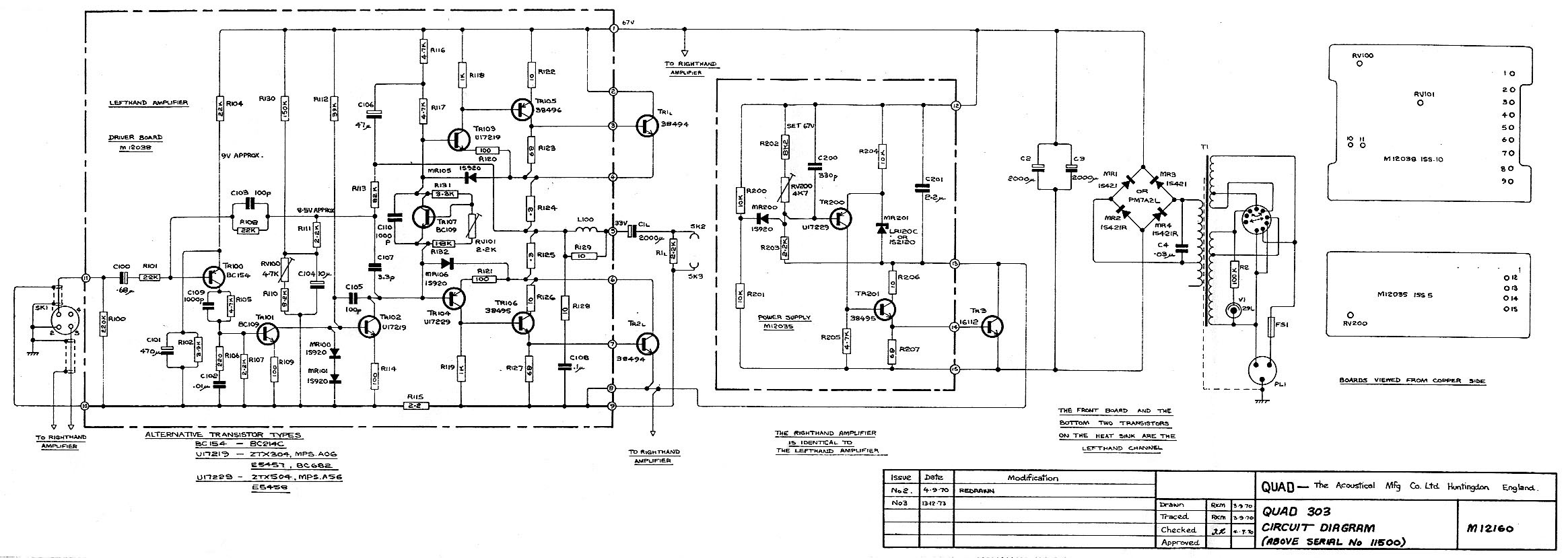
The UMZCH rated power was 45 watts per channel regardless of the nominal impedance of the speakers (in the range of 4 ~ 16 ohms), which is very impressive for 1968 (at that time, concert systems could have such power).
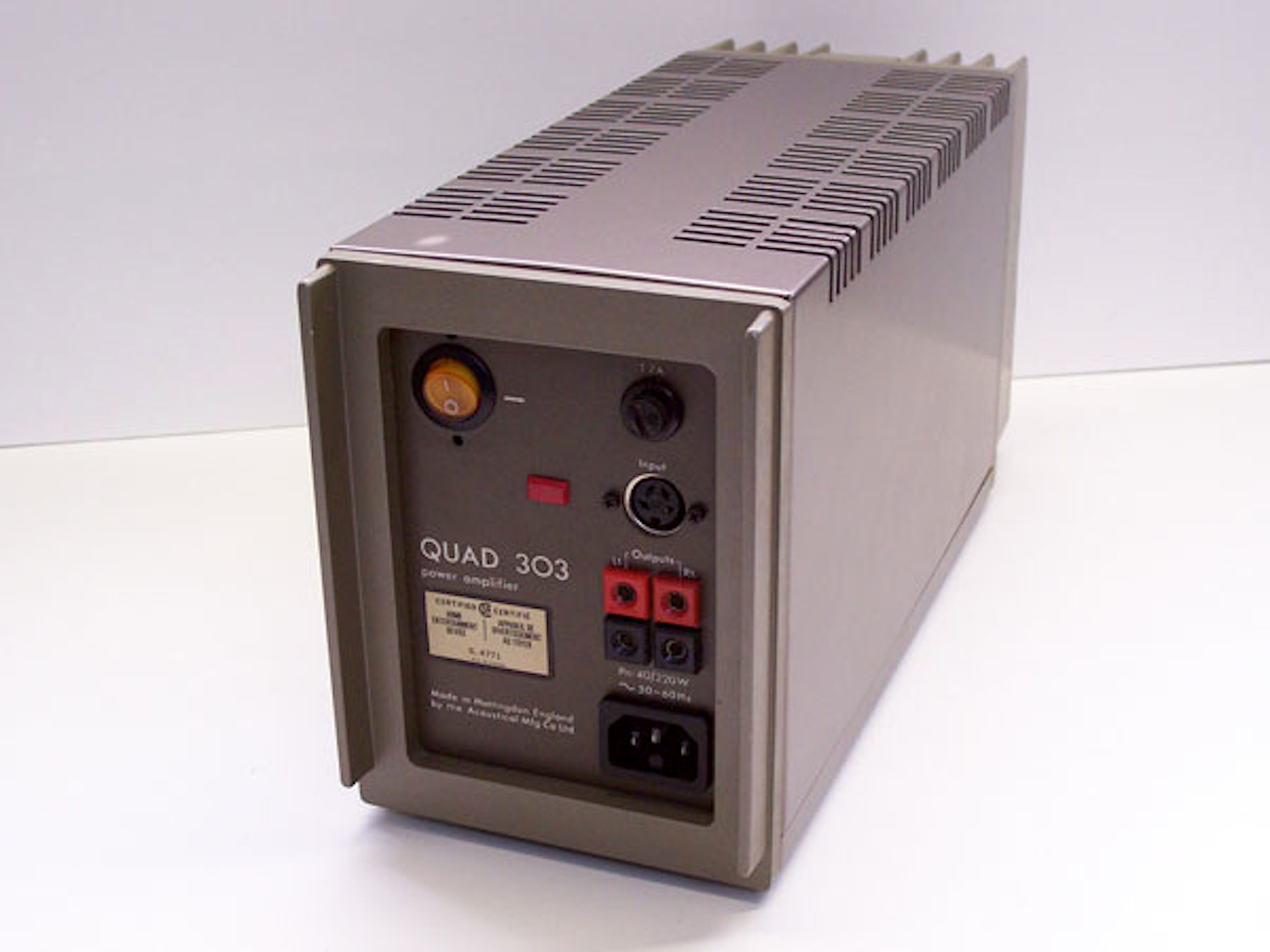
In those years, this UMZCH had a reputation as a universal device that could be used by both professionals and ordinary music lovers. A special place was occupied by limiter protection, which allowed the device to operate continuously for a long time under heavy load.

The creators of Quad 303 managed to reduce THD and IMD so much so that contemporaries had a hard time measuring them.
The main characteristics of the device are as follows:
Quickly enough, users realized the benefits of dual mono and began to use the Quad 303 in pairs, like 2 candy bars. The fact is that, according to contemporaries, the device worked equally stable in stereo as well as in mono mode.
By the early 1980s, the reputation of transistor systems fell below the baseboard. Apart from Ampzilla and a couple of monsters from large manufacturers like Mark Levinson, who could not fall into the dirt with their faces, there were no reliably sounding transistor amplifiers on the market. Judging by publications in archival journals such as Stereophile, users of that time complained that transistor amplification distorts the sound almost more than imperfect speaker systems of that time do.
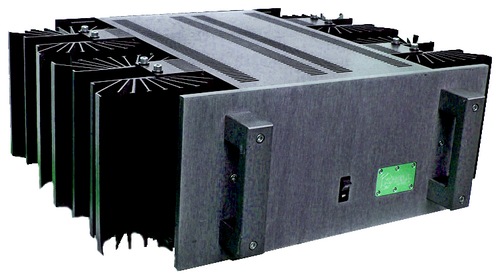
Among the enthusiasts there were people who believed (as it turned out to be not unreasonable) into the future of “silicon” sound and semiconductors in Hi-Fi, among them was Dan D'Agostino. We can say that the transistor High End began with this audio engineer. Today this guy is known as a pretentious and authoritative hero from the pages of audiophile press, one of the most experienced experts in uncompromising circuit design.
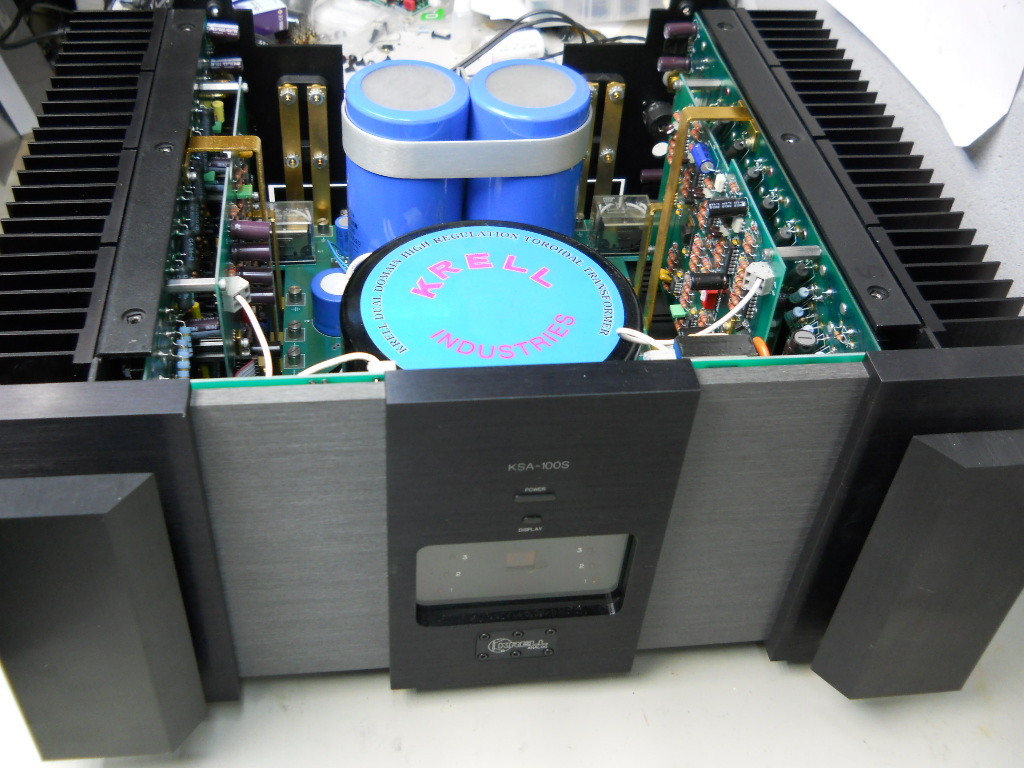
Late version KSA-100S
It all started with a passion, which almost did not bring income. The radio amateur and audio engineer-enthusiast were convinced that it was possible to create a transistor UMZCH superior to tube ones both in objective characteristics and in subjectively determined parameters. Such an amplifier was the Krell KSA-100.
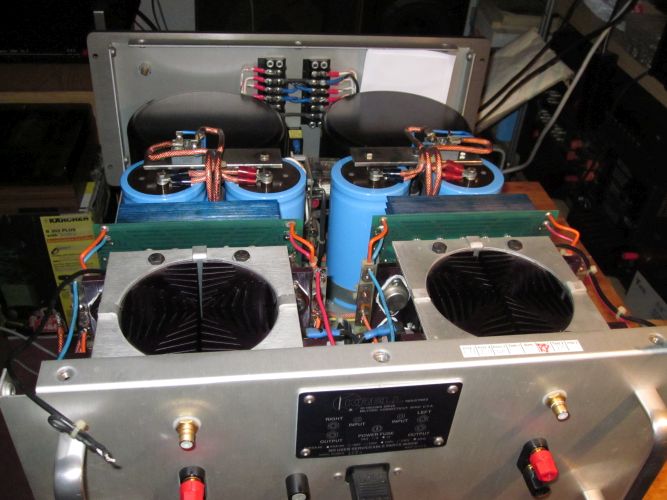
KSA-100 mk2
Development of the device was started in 1979, and already in 1981, the KSA-100 received the main prize at the Consumer Electronics Show (CES) International Consumer Electronics Show. On the features of circuit design will better tell the scheme, which became the starting point for so many amateur and professional developments in the west.
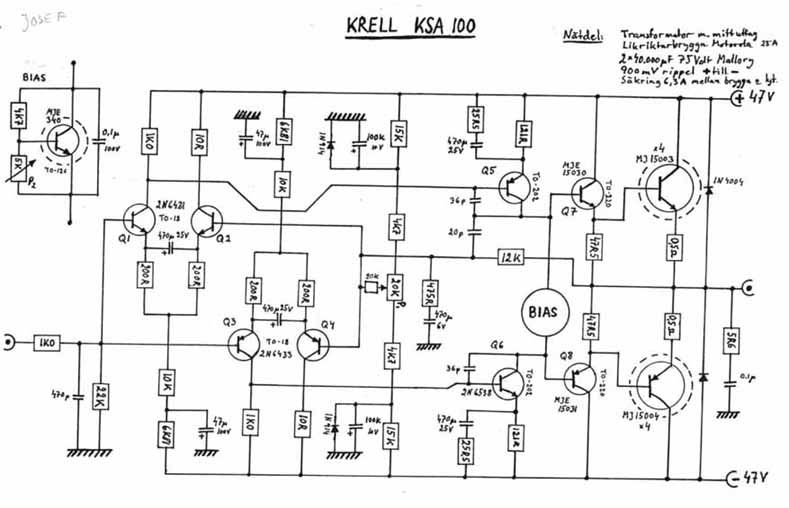
The use of high-quality components and non-trivial for its time circuit solutions allowed to achieve the following characteristics:
It should be noted that the device was produced for more than two decades, and the price for it changed several times, until 1994 it grew steadily, reaching a peak of $ 5,500. Experts from publications such as “The Absolute Sound”, “Stereophile” and “What hi-fi” did not hesitate to choose epithets, describing the merits of the author of a silicon legend. In one of these pretentious articles, D'Agostino was called “a man who proved that semiconductor amplifiers are capable of producing incomparable music”, which is generally true.
Dane Peter Lingdorf - an outstanding Danish engineer, co-founder and one of the leading developers of TacT (known today as “Lyngdorf Audio ApS”) created the legendary TacT Millennium for its time. In fact, this is a development that made us look differently at class D amplifiers, even the moststubborn audiophiles of discerning phylophonists.
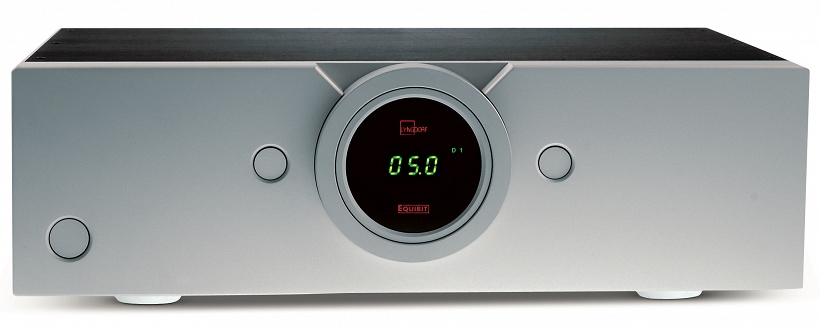
The fact is that most of the early class D amplifiers, in addition to high efficiency, were famous for the most disgusting sound. Such low quality of reproduction of a part of contemporaries of early integral amplification was blamed on the imperfection of technology. Others spoke of the impossibility of creating any decent amplifier in this class.
Presumably in 1997, Lingdorf decided to destroy conventional stereotypes about the possibilities of numbers and class D. He began to delve into the features of pulse-width and pulse-code modulation, to experiment. Later he created TacT for the production of devices that were fundamentally different from everything that was on the market at that time.
As a result of his research, Lingdorf came to the conclusion that in order to obtain high fidelity of reproduction with class D, it is necessary to apply an analog signal coding method using an increased sampling rate, namely 352.8 kHz (the developer obviously took with margin to impress his contemporaries).
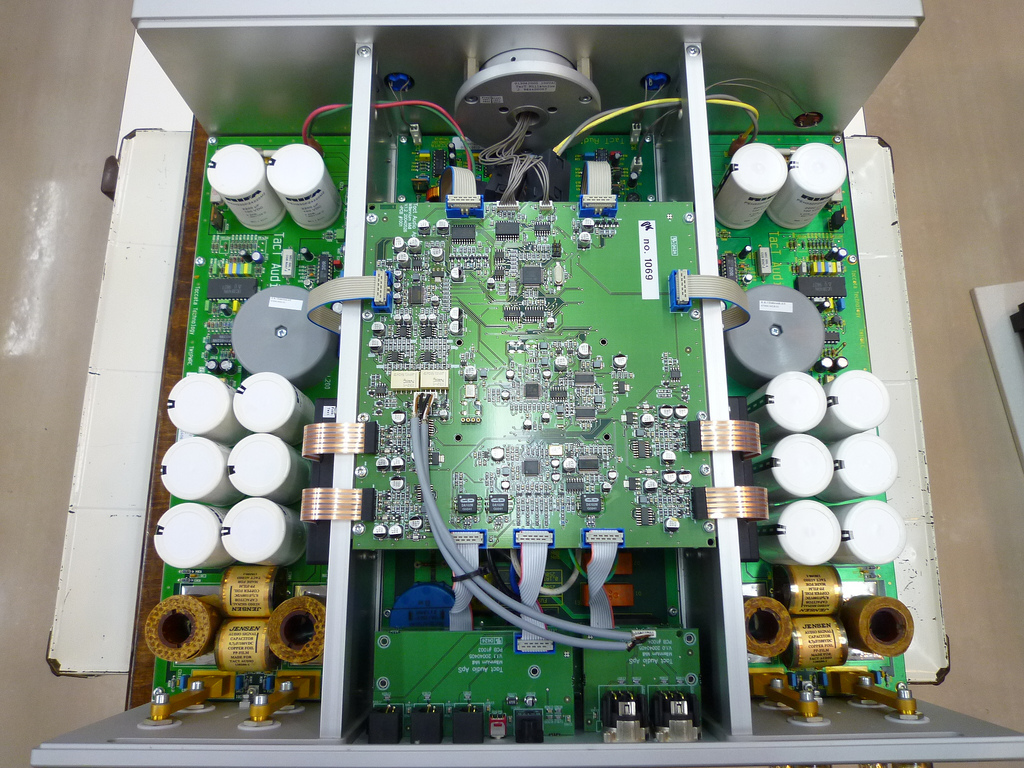
In this method, a sufficient dynamic range is achieved with a low quantization width. Due to this frequency, the probable quantization errors, that is, noises and distortions of the digital signal, are shifted to the high-frequency region, far beyond the limits of human perception.
In essence, the amplifier is a DAC with an analog terminal stage, so the word “digital input only” appears in the specifications for this device.

The results of the control measurements of the characteristics of the device can not fail to please those who advocate high fidelity of reproduction:
Based on the characteristics described above, “The Absolute Sound” and one of its contributors, Robert Green, have included TacT Millennium in the top ten best amplifiers in the world.
I think people who whine about “dead figure” and “this disgusting class D” will be interested to know that Robert Green (Robert E. Greene) is equally authoritative both among audio engineers and among technically savvy audiophiles, a recognized authority on reviews of the UMZCH tube lamps, considers one of the best amplifiers in the world - a digital amplifier operating in class D.
In this post I tried to collect the most iconic transistor amplifiers, which proved the viability of semiconductor circuitry back in the distant 60s, 80s and zero. In many ways, I want to demonstrate with this post that the fidelity of reproduction does not depend on the presence of vacuum devices in the amplifier. The real reason for the interest in lamps is rather in nostalgia for the time when “the sun shone brighter and the grass was greener”, marketing mythologization of the TLZ and rare cases of rational use, for example, with electrostatic headphones.
I propose to participate in the traditional survey.
Jeans
Our catalog contains a wide range of amplifiers., receivers and other audio equipment. You can purchase both transistor and lamp UMZCH as well as high fidelity speaker systems from us . Photo
content was used for the post:
meridian-audio.info
myoldvintagehifi.blogspot.com
www.hembrow.eu
www.inthouse.ru
www.avgid.com.ua
Thanks to these resources.

Some of my readers rightly pointed out that, despite my skepticism about the so-called. “Tube sound”, in this cycle I paid negligibly little attention to semiconductor developments. This post will correct such blatant injustice.
Forgive me lovers of “warm lampovos”, but in fact, semiconductor UMZCH, recognized circuitry masterpieces, engineers, music lovers and audiophiles, much more than the lamp.
Quad 303 - semiconductor legend of the 60s
It is believed that in the first decade of mass use of semiconductors in the amplifying circuitry (i.e. in the 1960s) there were no devices that could be comparable with tube ones in terms of fidelity. Despite this common belief, I am familiar with several such devices, the best of which, perhaps, is the Quad 303.
Many people call this amplifier the top of the development of transistor circuitry in the 60s. According to the claims of the audio engineer Peter Breuninger, it was the Quad 303 circuitry that laid the foundation for what will be successfully applied for another couple of decades.

The UMZCH rated power was 45 watts per channel regardless of the nominal impedance of the speakers (in the range of 4 ~ 16 ohms), which is very impressive for 1968 (at that time, concert systems could have such power).

In those years, this UMZCH had a reputation as a universal device that could be used by both professionals and ordinary music lovers. A special place was occupied by limiter protection, which allowed the device to operate continuously for a long time under heavy load.

The creators of Quad 303 managed to reduce THD and IMD so much so that contemporaries had a hard time measuring them.
The main characteristics of the device are as follows:
- Output power: 45 W;
- Frequency range: 30 Hz ~ 35 kHz;
- THD: 0.1%;
- Input sensitivity: 0.5V;
- Signal to noise ratio: 100 dB;
- Width: 120 mm; Height: 159 mm; Depth: 324 mm; Weight: 8.2 kg.
Quickly enough, users realized the benefits of dual mono and began to use the Quad 303 in pairs, like 2 candy bars. The fact is that, according to contemporaries, the device worked equally stable in stereo as well as in mono mode.
Krell KSA-100 - masterpiece radio amateur
By the early 1980s, the reputation of transistor systems fell below the baseboard. Apart from Ampzilla and a couple of monsters from large manufacturers like Mark Levinson, who could not fall into the dirt with their faces, there were no reliably sounding transistor amplifiers on the market. Judging by publications in archival journals such as Stereophile, users of that time complained that transistor amplification distorts the sound almost more than imperfect speaker systems of that time do.

Among the enthusiasts there were people who believed (as it turned out to be not unreasonable) into the future of “silicon” sound and semiconductors in Hi-Fi, among them was Dan D'Agostino. We can say that the transistor High End began with this audio engineer. Today this guy is known as a pretentious and authoritative hero from the pages of audiophile press, one of the most experienced experts in uncompromising circuit design.

Late version KSA-100S
It all started with a passion, which almost did not bring income. The radio amateur and audio engineer-enthusiast were convinced that it was possible to create a transistor UMZCH superior to tube ones both in objective characteristics and in subjectively determined parameters. Such an amplifier was the Krell KSA-100.

KSA-100 mk2
Development of the device was started in 1979, and already in 1981, the KSA-100 received the main prize at the Consumer Electronics Show (CES) International Consumer Electronics Show. On the features of circuit design will better tell the scheme, which became the starting point for so many amateur and professional developments in the west.

The use of high-quality components and non-trivial for its time circuit solutions allowed to achieve the following characteristics:
- Power: 100W (8 Ohm - 20 dBW);
- Frequency range: 20Hz – 20kHz;
- Irregularity of the frequency response: + 0.0 / –1dB (20Hz – 20kHz), + 0.0 / –3dB (1Hz – 150kHz);
- THD: <0.1%, 1kHz; <0.5%, 20kHz (at full power);
- The slew rate of the output voltage: 100V / µs;
- Input sensitivity: 1.4V RMS;
- Damping:> 60;
- Input impedance: 47 kΩ.
It should be noted that the device was produced for more than two decades, and the price for it changed several times, until 1994 it grew steadily, reaching a peak of $ 5,500. Experts from publications such as “The Absolute Sound”, “Stereophile” and “What hi-fi” did not hesitate to choose epithets, describing the merits of the author of a silicon legend. In one of these pretentious articles, D'Agostino was called “a man who proved that semiconductor amplifiers are capable of producing incomparable music”, which is generally true.
Digital amplifier TacT Millennium - High End Class D
Dane Peter Lingdorf - an outstanding Danish engineer, co-founder and one of the leading developers of TacT (known today as “Lyngdorf Audio ApS”) created the legendary TacT Millennium for its time. In fact, this is a development that made us look differently at class D amplifiers, even the most

The fact is that most of the early class D amplifiers, in addition to high efficiency, were famous for the most disgusting sound. Such low quality of reproduction of a part of contemporaries of early integral amplification was blamed on the imperfection of technology. Others spoke of the impossibility of creating any decent amplifier in this class.
Presumably in 1997, Lingdorf decided to destroy conventional stereotypes about the possibilities of numbers and class D. He began to delve into the features of pulse-width and pulse-code modulation, to experiment. Later he created TacT for the production of devices that were fundamentally different from everything that was on the market at that time.
As a result of his research, Lingdorf came to the conclusion that in order to obtain high fidelity of reproduction with class D, it is necessary to apply an analog signal coding method using an increased sampling rate, namely 352.8 kHz (the developer obviously took with margin to impress his contemporaries).

In this method, a sufficient dynamic range is achieved with a low quantization width. Due to this frequency, the probable quantization errors, that is, noises and distortions of the digital signal, are shifted to the high-frequency region, far beyond the limits of human perception.
In essence, the amplifier is a DAC with an analog terminal stage, so the word “digital input only” appears in the specifications for this device.

The results of the control measurements of the characteristics of the device can not fail to please those who advocate high fidelity of reproduction:
- Power (RMS), 4 Ohms, 2 x 300W, 1 KHz, 0.1% THD + N
- Power (RMS), 8 Ohm, 2 x 150W, 1 KHz, 0.1% THD + N
- Nominal resistance 4 - 8 Ohm
- Frequency range 0.3Hz-33KHz -3dB points, 8 Ohm
- Frequency range 20Hz-20KHz -0dB / + 0.2dB, 8 Ohm
- THD + N: 0.01%, 1W / 8 Ohm
- THD + N: 0.015%, 1W / 4 Ohm
- THD + N: 0.06%, 100W / 8 Ohms
- THD + N: 0.02%, 300W / 4 Ohm
- S / N ratio: 113 dB, Ref. 200/8 ohm
- Dynamic range: 140 dB, Ref. 200 W / 8 Ohm
- Channel separation n 100 dB 1 KHz, 200 W / 8 Ohm
Based on the characteristics described above, “The Absolute Sound” and one of its contributors, Robert Green, have included TacT Millennium in the top ten best amplifiers in the world.
I think people who whine about “dead figure” and “this disgusting class D” will be interested to know that Robert Green (Robert E. Greene) is equally authoritative both among audio engineers and among technically savvy audiophiles, a recognized authority on reviews of the UMZCH tube lamps, considers one of the best amplifiers in the world - a digital amplifier operating in class D.
Total
In this post I tried to collect the most iconic transistor amplifiers, which proved the viability of semiconductor circuitry back in the distant 60s, 80s and zero. In many ways, I want to demonstrate with this post that the fidelity of reproduction does not depend on the presence of vacuum devices in the amplifier. The real reason for the interest in lamps is rather in nostalgia for the time when “the sun shone brighter and the grass was greener”, marketing mythologization of the TLZ and rare cases of rational use, for example, with electrostatic headphones.
I propose to participate in the traditional survey.
Jeans
Our catalog contains a wide range of amplifiers., receivers and other audio equipment. You can purchase both transistor and lamp UMZCH as well as high fidelity speaker systems from us . Photo
content was used for the post:
meridian-audio.info
myoldvintagehifi.blogspot.com
www.hembrow.eu
www.inthouse.ru
www.avgid.com.ua
Thanks to these resources.
Only registered users can participate in the survey. Sign in , please.
